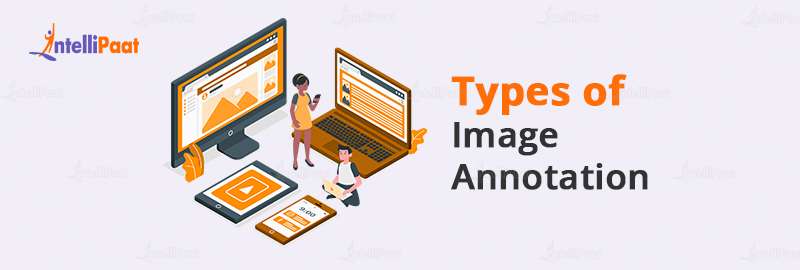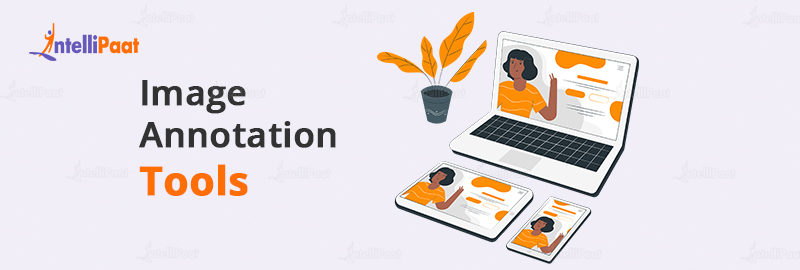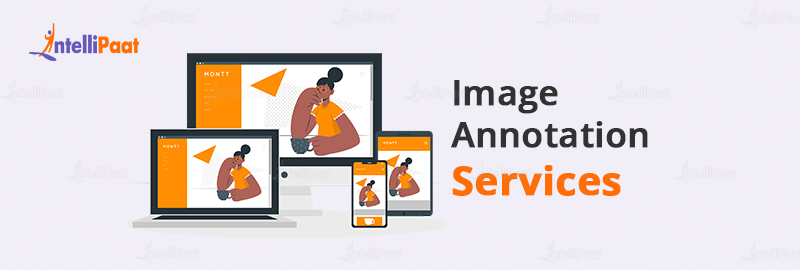What is Image Annotation?
Let’s delve deep into the world of image annotation, exploring its various tools, types, and services to develop a comprehensive understanding of image annotation and its significance.
Points to Ponder
- What is Image Annotation?
- Types of Image Annotation
- Image Annotation Tool
- Image Annotation Services
- Conclusion
Want to learn Machine Learning from scratch? Watch the video below
{
“@context”: “https://schema.org”,
“@type”: “VideoObject”,
“name”: “Machine Learning Training | Machine Learning Full Course | Machine Learning Tutorial | Intellipaat”,
“description”: “What is Image Annotation?”,
“thumbnailUrl”: “https://img.youtube.com/vi/3GAunHmofok/hqdefault.jpg”,
“uploadDate”: “2023-04-19T08:00:00+08:00”,
“publisher”: {
“@type”: “Organization”,
“name”: “Intellipaat Software Solutions Pvt Ltd”,
“logo”: {
“@type”: “ImageObject”,
“url”: “https://intellipaat.com/blog/wp-content/themes/intellipaat-blog-new/images/logo.png”,
“width”: 124,
“height”: 43
}
},
“contentUrl”: “https://www.youtube.com/watch?v=3GAunHmofok”,
“embedUrl”: “https://www.youtube.com/embed/3GAunHmofok”
}
What is Image Annotation?
Have you ever wondered how machines are able to “see” and “understand” images just like humans do? One of the key steps in this process is image annotation. In simple terms, image annotation involves labeling or adding metadata to images, so that machines can recognize and interpret the objects, features, and attributes within the image.
The process of image annotation is a crucial part of training machine learning algorithms, which use vast amounts of labeled data to learn how to identify and classify objects in images. For example, an image annotation task might involve identifying and labeling the various objects within an image, such as people, animals, vehicles, buildings, and natural features. The annotations might also include information about the color, shape, size, orientation, and position of these objects.
Image annotation can be done manually by humans, or through automated processes using computer vision techniques. Manual annotation involves trained annotators using specialized tools to carefully label and describe each object in an image, which can be a time-consuming and expensive process. On the other hand, automated annotation can be faster and cheaper, but not as accurate as human annotation. as a human annotation.
The applications of image annotation are wide-ranging and diverse. It can be used for object recognition in autonomous vehicles, medical image analysis, content-based image retrieval, surveillance and security, and even in e-commerce for visual search and recommendation systems. By using image annotation, machines can gain a better understanding of the visual world, and this can enable a wide range of exciting and innovative applications.
In technical terms, image annotation refers to the process of adding metadata or labels to an image to describe its contents accurately. It involves identifying and highlighting specific features, objects, or attributes in an image, making it easier to analyze and understand. The process is crucial for various industries, including healthcare, retail, automotive, and more, as it helps in image classification, object detection, facial recognition, and many other applications.
Enroll in our Machine Learning Course to learn the concepts of ML and AI.
Types of Image Annotation

There are several types of image annotation techniques, each designed to capture different aspects of an image. Here are some of the most common types of image annotation:
- Image Classification:
Image classification involves labeling an entire image with a single class label. For example, if you have a dataset of animal images, you might label each image as “cat,” “dog,” “bird,” or “fish.” This type of annotation is useful for tasks where you only need to identify the general category of an image.
- Semantic Segmentation:
Semantic segmentation labels each pixel in an image with a class label. This allows you to identify the boundaries of objects and separate them from the background. For example, if you have an image of a street scene, you might label each pixel as “car,” “road,” “sidewalk,” or “building.” Semantic segmentation is useful for tasks where you need to identify specific objects in an image.
- Instance Segmentation:
Instance segmentation segregates each individual object in an image with a unique identifier. This allows you to differentiate between objects of the same class. For example, if you have an image of a group of people, you might label each person with a unique identifier. Instance segmentation is useful for tasks where you need to identify and track individual objects in an image.
- Panoptic Segmentation:
Panoptic segmentation is a combination of semantic and instance segmentation. It classifies each pixel in an image with either a semantic class label or an instance identifier. This allows you to identify both, specific objects and the general classes in an image. Panoptic segmentation is useful for tasks where you need to understand the overall context and the specific details of an image.
- Object Detection:
Object detection involves identifying and localizing objects in an image. This typically involves drawing a bounding box around each object and labeling it with a class label. For example, if you have an image of a group of people, you might draw a bounding box around each person and label it with the class label “person.” Object detection is useful for tasks where you need to identify the location and class of objects in an image.
Check out Machine Learning Interview Questions and Answers to crack your interviews.
Image Annotation Tool

Image annotation tools are essential for machine learning, computer vision, and data analysis tasks. Here are five popular and engaging image annotation tools:
- Labelbox:
Labelbox is a versatile image annotation tool that supports a wide range of annotation types, including bounding boxes, polygons, lines, and point annotations. It also has a collaborative feature that allows multiple users to work on a project simultaneously. Labelbox is intuitive and user-friendly, making it easy for even non-technical users to annotate images.
- VGG Image Annotator (VIA):
VIA is an open-source and browser-based image annotation tool that supports a range of annotation types, including bounding boxes, polygons, and points. It has a simple and easy-to-use interface and supports both single and multiple image annotation. VIA also allows users to import and export annotations in different formats, making it easy to integrate with other tools and workflows.
- CVAT:
CVAT is again an open-source and web-based image annotation tool that supports multiple annotation types, including bounding boxes, polygons, and semantic segmentation. It also has advanced features like automatic annotation, video annotation, and tracking annotations across multiple frames. CVAT is highly customizable and supports multiple users, making it a good choice for large teams.
- RectLabel:
RectLabel is an annotation tool specifically designed for object detection in images. It has a user-friendly interface and supports a range of annotation types, including bounding boxes, polygons, and lines.
RectLabel has a built-in deep learning engine that can automatically detect and label objects in images, making the annotation process faster and more efficient.
- Supervisely:
Supervisely is an all-in-one platform for computer vision tasks, including image annotation, training, and deployment. It supports a wide range of annotation types, including bounding boxes, polygons, and instance segmentation.
Supervisely has a built-in model training feature that allows users to train custom object detection and segmentation models using their annotated data. It’s a great choice for teams looking for a comprehensive computer vision solution.
Get started on your path to Machine Learning mastery. Check out our Machine Learning Tutorial now.
Image Annotation Services

All the services mentioned below offer a range of annotation types and have a team of experienced annotators to deliver high-quality and accurate annotations.
Image annotation in machine learning and AI algorithms ensures efficient and fast annotation delivery, making them great options for companies looking for professional image annotation services.
- CloudFactory:
CloudFactory is a leading image annotation service provider that uses human annotators to accurately annotate images and improve the performance of machine learning algorithms. They offer a range of image annotation services, including object detection, image segmentation, and image classification. Their team of trained and experienced annotators ensure high accuracy and quality while delivering large volumes of annotations in a short time.
- Scale AI:
Scale AI is an annotation service provider that uses a combination of human and machine intelligence to annotate images at scale. They offer a range of annotation services, including object detection, image segmentation, and data categorization. Their platform is built on advanced machine learning algorithms and is capable of handling large volumes of data while ensuring high accuracy and quality.
- Appen:
Appen offers annotation services that specializes in training machine learning models for various industries, including healthcare, e-commerce, and autonomous vehicles. They offer a range of annotation services, including image classification, object detection, and semantic segmentation. Appen uses a combination of human and machine intelligence to provide high-quality and accurate annotations while ensuring data privacy and security.
Career Transition
Conclusion
Image annotation is a critical task in the field of computer vision that involves the labeling of images with relevant information to help machines understand them. This process is essential for various industries, including healthcare, agriculture, retail, and security. With the increasing demand for automated image analysis, image annotation has become a hot topic in the field of artificial intelligence.
Its benefits are undeniable. It allows machines to accurately identify and classify images, making it possible to automate processes and save time and resources. Additionally, it can be used to improve the performance of machine learning models and enhance the accuracy of results.
As the demand for image annotation services continues to grow, it is crucial to choose a reliable and experienced provider. With the help of advanced tools and technologies, a professional image annotation service can provide accurate and consistent results that meet the specific requirements of clients.
If you have any questions or queries, please feel free to drop them on our community page. We are always happy to help and answer any questions you may have.
The post What is Image Annotation? appeared first on Intellipaat Blog.
Blog: Intellipaat - Blog
Leave a Comment
You must be logged in to post a comment.














